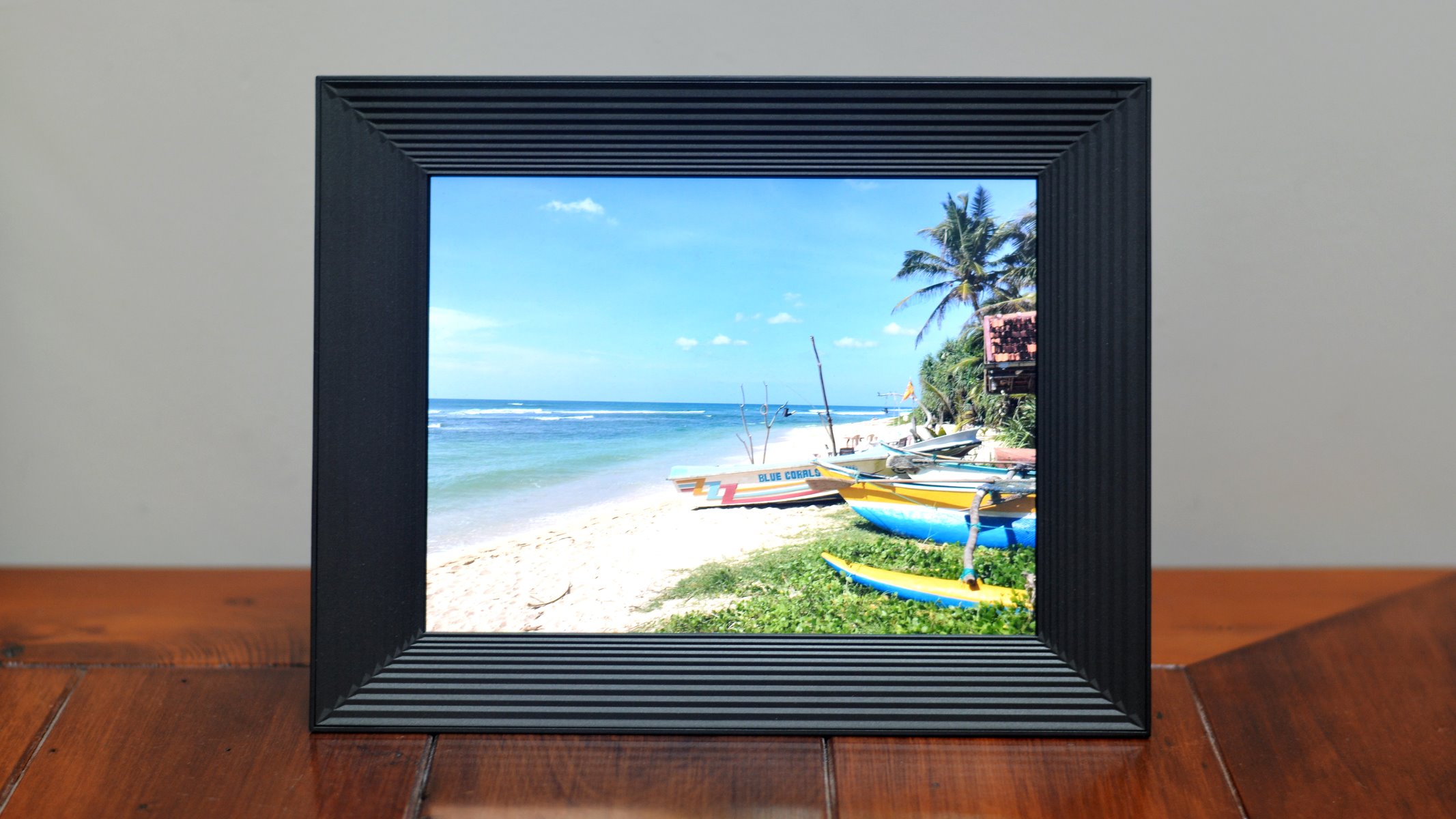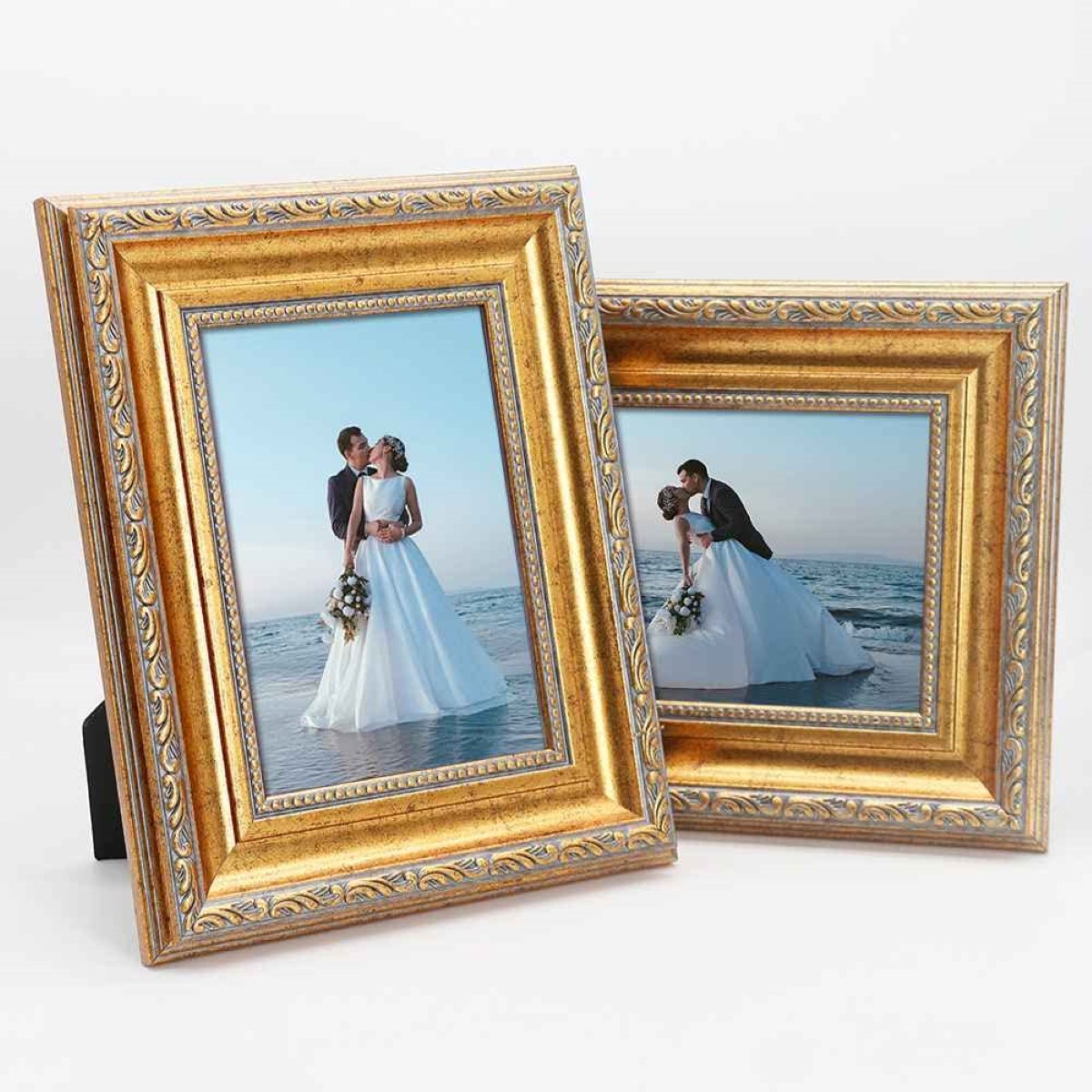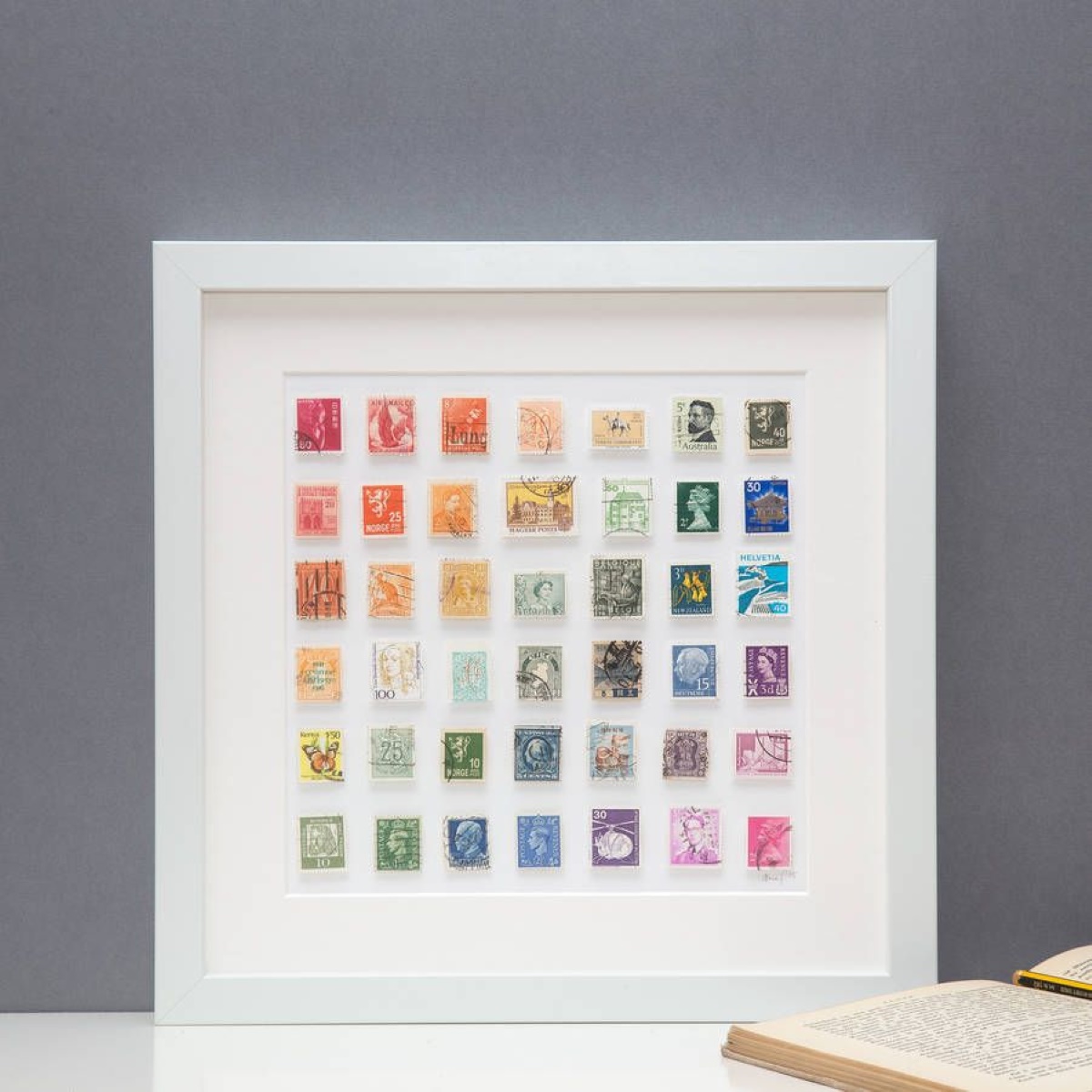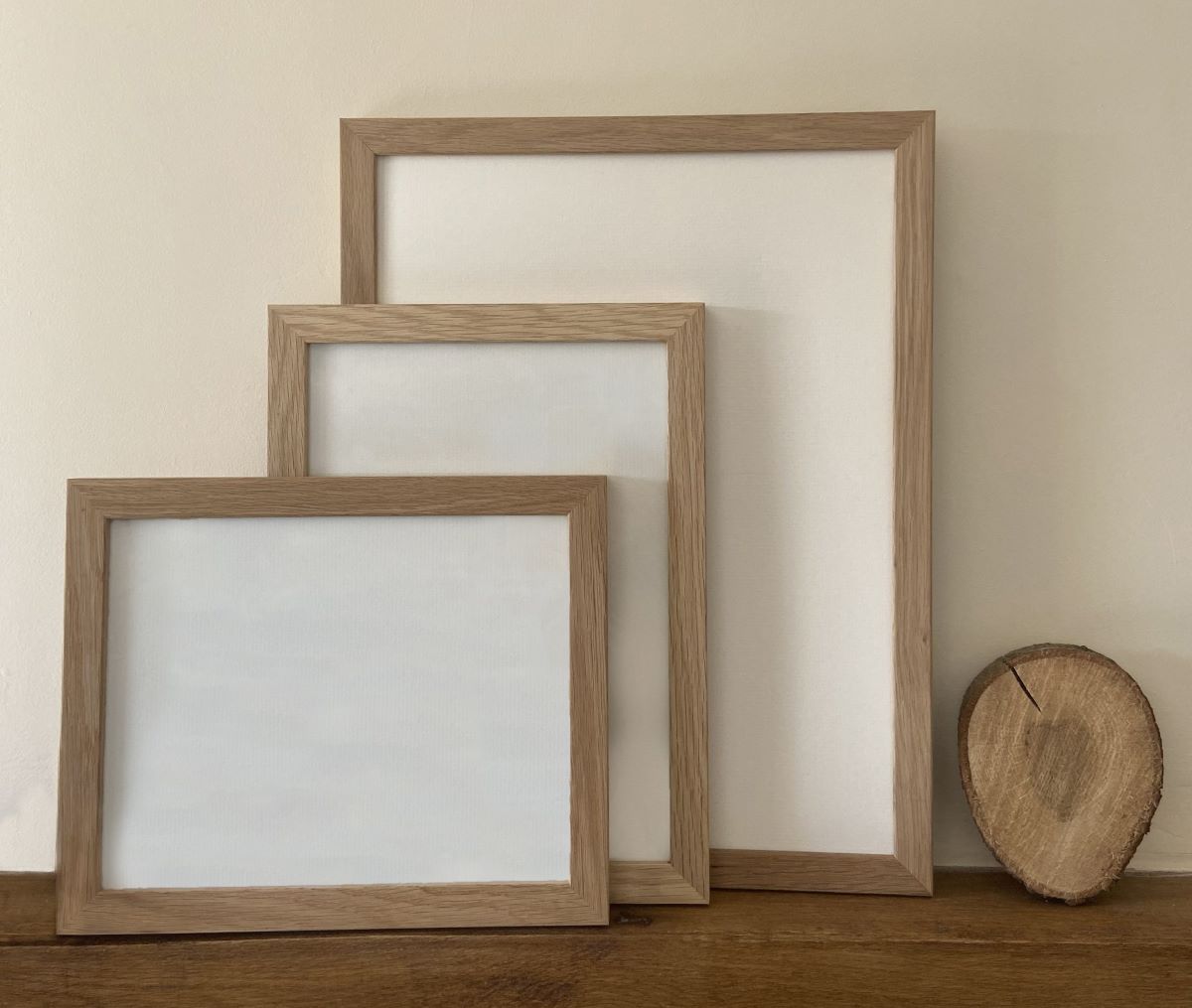

Articles
What Are The Sizes Of Picture Frames
Modified: August 27, 2024
Discover the various sizes of picture frames in this informative article. From standard sizes to custom options, find the perfect frame for your photos and artwork.
(Many of the links in this article redirect to a specific reviewed product. Your purchase of these products through affiliate links helps to generate commission for Storables.com, at no extra cost. Learn more)
Introduction
Picture frames play an essential role in preserving and displaying our cherished memories and artwork. They not only protect the images but also enhance their visual appeal. When it comes to choosing the right picture frame, size is a critical factor to consider. The size of a picture frame determines how well it fits the image and complements the surrounding decor.
In this article, we will explore the various sizes of picture frames to help you make informed decisions when selecting the perfect frame for your photos, artwork, or posters.
Before we dive into the specific dimensions, it’s important to understand that picture frame sizes typically refer to the measurement of the glass or matting that holds the image. The overall size of the frame, including the molding or border, will be larger. With that in mind, let’s explore the standard sizes that are commonly available.
Key Takeaways:
- Choose the right frame size by measuring your image, considering aspect ratios, and visual balance. Experiment with matting and seek professional advice for a visually stunning display.
- Standard, popular, and specialty frame sizes offer versatile options for displaying images and objects. Consider the intended display location and overall aesthetics to create impactful presentations.
Read more: What Types Of Picture Frames Are There
Standard Sizes of Picture Frames
When it comes to picture frames, there are several standard sizes that are widely available. These standard sizes are commonly used in the industry and are easily found in stores or online. Here are some of the most popular standard sizes:
- 4×6 inches – This small frame size is ideal for tabletop displays or for creating collages of multiple images. It is commonly used for displaying family photos, snapshots, or postcards.
- 5×7 inches – Slightly larger than the 4×6 size, the 5×7 frame is perfect for showcasing more detailed photos or artwork. It works well for portrait shots or small prints.
- 8×10 inches – The 8×10 size is a classic and versatile choice. It is ideal for framing portraits, landscape photos, or small posters. This size is a popular choice for displaying artworks in galleries or homes.
- 11×14 inches – This size is commonly used for displaying larger, more impactful images. It works well for framing diplomas, certificates, or any artwork that you want to make a statement with.
- 16×20 inches – The 16×20 size is a popular choice for showcasing larger photographs or artwork. It provides a significant presence on the wall and is often used for displaying group photos or landscapes.
- 18×24 inches – This frame size is commonly used for displaying movie posters, larger prints, or artwork that requires a more prominent display. It creates a focal point in any room.
These sizes are considered standard because they are easily accessible and are compatible with a wide range of image dimensions. However, it’s important to note that these dimensions are not set in stone and can vary slightly between manufacturers. It’s always a good idea to measure your image accurately and choose a frame size accordingly.
Common Aspect Ratios
In addition to standard frame sizes, it’s also important to consider the aspect ratio of your images when selecting a picture frame. The aspect ratio refers to the proportional relationship between the width and height of an image. Different aspect ratios can affect the way an image is displayed and framed.
Here are some of the most common aspect ratios you may encounter:
- 1:1 – This square aspect ratio is commonly used for social media profile pictures and some medium format film cameras.
- 4:3 – This aspect ratio is commonly found in older digital cameras and many computer displays. It provides a more rectangular shape.
- 3:2 – This aspect ratio is commonly used by 35mm film cameras and is often associated with the classic 6×4 inch print size.
- 16:9 – This widescreen aspect ratio is commonly used in HDTVs, computer monitors, and for video content.
When choosing a frame size, it’s important to consider the aspect ratio of your image to ensure a proper fit. For example, if you have a 4×6 inch photo with a 3:2 aspect ratio, you may need to choose a frame size that accommodates the extra height of the image.
Keep in mind that some frames may include matting, which is an additional border around the image. Matting can be used to adjust the frame size to fit your image and create a visually appealing presentation.
Understanding the aspect ratio of your images and selecting a frame size that complements it will ensure a perfect fit and enhance the overall aesthetics of your framed piece.
Popular Frame Sizes and Their Uses
While standard sizes provide a good starting point, there are several popular frame sizes that have become go-to choices for specific purposes. These sizes offer a balance of functionality and aesthetics, making them suitable for various types of images and displays. Let’s look at some popular frame sizes and their common uses:
- 8×10 inches – This size is often used for framing portraits, family photos, or small artwork. It is a versatile choice that works well for displaying images on walls, mantels, or desks.
- 11×14 inches – The 11×14 size is popular for displaying artworks, such as paintings or sketches. Its larger dimensions make it suitable for showcasing more intricate details and adding visual impact to a room.
- 12×18 inches – This frame size is commonly used for showcasing photographs or posters. It offers a larger display area without being too overwhelming, making it ideal for focal points on walls or as statement pieces in a room.
- 18×24 inches – The 18×24 size is often chosen for displaying movie posters, larger prints, or artwork that demands attention. It can serve as a centerpiece and create a dramatic effect on any wall.
- 24×36 inches – This large frame size is commonly used for displaying movie posters, art prints, or photographs with significant visual impact. It is an excellent choice for creating a bold statement in larger spaces.
These popular frame sizes are available in a variety of styles and materials, allowing you to find the perfect match for your image and decor. Whether you’re creating a gallery wall, showcasing a special photograph, or exhibiting an artwork, these sizes offer versatility and impact.
Remember, the choice of frame size should be based on the dimensions and aspect ratio of your image, as well as the intended display location. Taking these factors into consideration will ensure that your framed piece looks its best and enhances the overall aesthetics of the space.
When choosing the size of a picture frame, consider the dimensions of the artwork or photo you want to display. Measure the width and height of the piece and select a frame that is slightly larger to allow for matting and a border.
Specialty Frame Sizes
In addition to standard and popular frame sizes, there are also specialty frame sizes available that cater to specific needs or unique display requirements. These specialty sizes offer flexibility in framing various types of images and objects. Let’s explore some of these specialty frame sizes:
- Panoramic Sizes – Panoramic frame sizes are designed to accommodate wide and narrow images, such as landscape or cityscape photographs. Common panoramic sizes include 8×20 inches, 10×30 inches, and 12×36 inches. These frames are perfect for showcasing stunning panoramic shots and creating a sense of depth and grandeur.
- Square Sizes – Square frames are often used for Instagram photos, Polaroid prints, or artwork with a square format. Common square sizes include 8×8 inches, 12×12 inches, and 20×20 inches. Square frames can add a modern and artistic touch to your display.
- Certificate Sizes – Certificate frames are specially designed to fit standard certificate dimensions. These sizes typically include 8.5×11 inches and 11×14 inches, making them perfect for displaying diplomas, awards, or professional certifications.
- Shadow Box Sizes – Shadow boxes are deeper frames that allow you to create displays with three-dimensional objects. These frames have various sizes, such as 9×9 inches, 12×12 inches, and 16×20 inches. Shadow boxes offer a unique way to showcase memorabilia, collectibles, or valuable items.
- Custom Sizes – Sometimes, you may have an image or artwork that doesn’t fit standard or specialty sizes. In such cases, custom frame sizes can be crafted to perfectly accommodate your unique dimensions. Custom frame sizes offer endless possibilities for displaying artwork or photographs with precise measurements.
Specialty frame sizes provide options to effectively showcase specific types of images or objects. Whether you have a panoramic photograph, a square print, a certificate, or a treasured keepsake, these frames ensure a tailored and visually appealing presentation.
When choosing a specialty frame size, consider the dimensions and proportions of your image or object, as well as the aesthetic effect you want to achieve. With the right specialty frame, you can elevate the visual impact and create a personalized display that captures attention.
Tips for Choosing the Right Frame Size
Choosing the right frame size can greatly enhance the visual impact of your artwork or photographs. Here are some useful tips to consider when selecting a frame size:
- Measure your image accurately – Before choosing a frame, measure your image carefully, including both the width and height. Make sure to account for any borders, matting, or additional space you want around the image.
- Consider the aspect ratio – Take into account the aspect ratio of your image and choose a frame size that complements it. Adjustments may be necessary to accommodate the width or height of the image.
- Consider the intended display location – Think about where you plan to display your framed piece. If it’s a small wall space, a smaller frame size may be more appropriate. For larger areas, you can opt for a bigger frame size to make a bold statement.
- Think about the visual balance – Consider the proportions of the image and the frame. A large image may overpower a small frame, while a small image may get lost in a large frame. Aim for a visually pleasing balance between the two.
- Consider the overall design and style – Choose a frame size that fits the overall aesthetics of the room or space where it will be displayed. A contemporary room may call for a larger frame size, while a more intimate setting may suit a smaller frame size.
- Experiment with matting – Matting can add an extra border around your image, creating visual separation between the image and the frame. Playing with different sizes of matting can help you achieve the desired aesthetic effect.
- Consult a professional framer – If you’re unsure about which frame size to choose, seek advice from a professional framer. They can guide you in selecting the right size, style, and material for your specific image or artwork.
By considering these tips, you can confidently select the right frame size that enhances the beauty of your image and complements your space, creating a visually stunning presentation.
Conclusion
Choosing the right frame size is crucial for effectively displaying your cherished memories, artwork, or photographs. Whether you opt for standard sizes, popular sizes, or specialty sizes, understanding the dimensions, aspect ratios, and intended display location is key to achieving a visually pleasing and impactful presentation.
Standard sizes like 4×6 inches, 5×7 inches, and 8×10 inches offer versatility for tabletop displays and smaller prints. Meanwhile, popular sizes like 11×14 inches and 16×20 inches can create focal points on walls, showcasing larger images or artworks.
For unique or specific needs, specialty frame sizes such as panoramics, squares, certificate sizes, shadow boxes, and custom sizes offer tailored options to accommodate various types of images and objects.
When choosing a frame size, it’s important to consider the measurements of your image, the aspect ratio, the aesthetic impact, and the overall style of the space where it will be displayed. Experimenting with matting and consulting a professional framer can also provide valuable insights.
By considering these factors and adhering to these tips, you can confidently select the perfect frame size that enhances your images, highlights their beauty, and elevates the overall ambiance of your space.
So, go ahead and explore the vast array of frame sizes available, unleash your creativity, and showcase your treasured memories and artwork in the most captivating way possible.
Curious about going big with your decor? If you're fascinated by the thought of adorning walls with eye-catching art, our next piece on large picture frames might just be what you need. Covering a range of styles that fit any room's aesthetic, this guide will ensure your favorite paintings and prints stand out beautifully. Perfect for anyone eager to make a bold statement in their living space or gallery.
Frequently Asked Questions about What Are The Sizes Of Picture Frames
Was this page helpful?
At Storables.com, we guarantee accurate and reliable information. Our content, validated by Expert Board Contributors, is crafted following stringent Editorial Policies. We're committed to providing you with well-researched, expert-backed insights for all your informational needs.















0 thoughts on “What Are The Sizes Of Picture Frames”